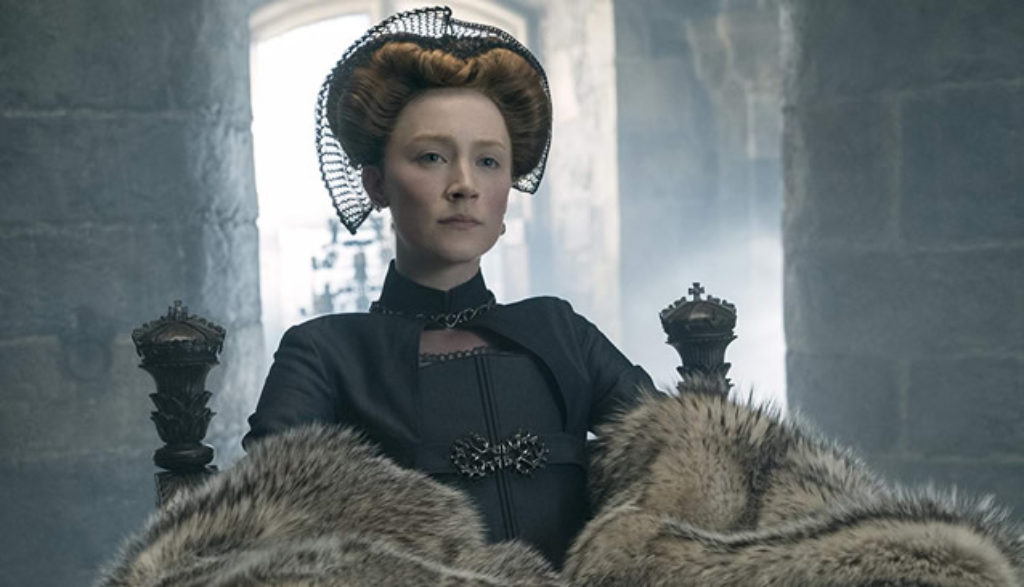
In the year 1587, Mary Queen of Scots was beheaded. Elizabeth I, the Queen of England, ordered her execution on the grounds of treason. But Mary’s road to the guillotine was a long one, filled with defiance, turmoil and strife.
As a child, Mary was raised in France, away from her native land and her native religion. At the age of 15, she was married to Francis, heir apparent to the French throne. By 18, she was widowed. In the wake of her royal husband’s death, Mary returned to Scotland to claim her rightful place as queen—but she was not well received in the world of men.
Mary soon learned that she’d need to fight to keep her crown. She thought that perhaps, with the help of her “sister” Elizabeth I, the two rule could Britannia in harmony, if only they had a chance to meet. But Mary wasn’t content just ruling Scotland, so she implored Elizabeth to name her as successor to the crown of England as well.
Elizabeth had no interest in meeting or choosing a successor. As tensions between Catholics and Protestants grew more pronounced, the two queens’ meeting became even more unlikely. Elizabeth, a Protestant, could not be seen with Mary, a Catholic, during such politically tumultuous times.
Yet Mary persisted. She refused to take a husband, unless of course she could be named successor to the English crown. But though her will was strong, the forces of deception, rebellion and betrayal arrayed against her were far stronger.
Mary would have to forsake all she knew, including her own crown, to exist in a world dominated by paranoid rulers and the iron fist of the opposite sex.
Mary is fiercely independent and learns from her mistakes (even though some such lessons come too late to help her). As Elizabeth tries to control Mary, Mary learns to negotiate and makes it clear that she will not wed unless it is benefits her own interests.
Mary is also portrayed as strong, bold, forgiving, kind and accepting, someone who fights for the unity of her kingdom and that of England. When her half-brother tries to thwart her plans, she still forgives and pardons him (even though that merciful response ultimately leads to her demise).
Similarly, Queen Elizabeth is a bold and fierce leader in her own right. She is portrayed as a seasoned queen, unwilling to bend at a whim. She tells Mary that “only with suffering do we know joy.” Elizabeth herself possesses many positive attributes, and she views Mary as a fierce woman who is determined, beautiful and charming.
Both women fight for their rights as queens, especially when they’re discriminated against because of their gender.
The tension between the Catholics and Protestants strongly influences the outcome of Mary’s tragic story here. Mary is a Catholic ruling in a Protestant nation, and her religious identification is not well received.
A pastor in her council leaves, angry that she will not take his advice. He then pits his congregation against her, telling them that she is a servant of Satan, that she is evil and that she kneels to the Pope instead of God. The pastor also informs his congregation that there is only one true God, that of the Protestant faith. He curses Mary and works to enrage his congregation against her.
Mary believes that Elizabeth’s illness is God’s will, and Mary speaks often of what she believes God desires. Multiple discussions revolve around questions of God’s guidance (or the lack thereof), though a true understanding of God and His character is often quite shallow here.
Crosses are seen in the background as Mary prays to God before her execution. A man says that he would worship at Mary’s feet. Mary assures a group of soldiers that when we die, we all go to same heaven. She also asks her maidens to pray for her to produce an heir.
Mary and Elizabeth share the same concern about marriage: They fear that if they marry, they will be “owned.” Both women make it clear that they do not wish to be controlled by men.
The film depicts several explicit sexual encounters that, while managing to avoid frontal nudity, nevertheless show bare backsides, movements and various sexual activities. Elsewhere, a woman’s breasts are mostly visible through a wet nightgown. Mary and her gentlewomen talk about her past sexual experiences with Francis, and the women discuss their own sexual desires as well.
Mary’s right-hand man, David Rizzio, wishes that he were a woman instead of a man. (He says this as he dances, dressed as a woman, with Mary and her gentlewomen.) Mary encourages David to be true to his nature, even after David and Henry (Mary’s husband) are seen in bed together. That scene implies that the two men had an intimate encounter the night before. (We see them unclothed in bed together, their male anatomy covered by a sheet.)
David and Henry are called “sodomizers.” Multiple men tell Henry that David and Mary have had sexual relations (though they haven’t) and that their close bond is unnatural. Two men kiss, and other men flirt with each another as well.
Queen Elizabeth and her lover, Robert Dudley, are shown in bed together (fully clothed), and it is implied that the two have formerly engaged in some kind of sexual activity. He also kisses her neck.
A man flirts with and kisses one of Mary’s gentlewomen, although the man is married. He also tries to lift up her dress, and we see the woman’s exposed thighs. Women wear cleavage-baring tops. Couples kiss and hug. A dance ceremony is held where women dance provocatively. Mary is washed by her gentlewomen after she bleeds through her gown while having her period. Elsewhere, she is seen in the throes of labor.
Mary is forced to marry a man against her will and is counseled to divorce her husband.
Mary is raped in one scene (her thigh and rear exposed from the side) as a man forces himself on her (his bare backside also exposed).
Mary is sentenced to death (we see a head block and axe). Her pregnant belly is threatened with a knife. Elizabeth sends soldiers to help incite a civil war in Scotland. Mary confronts Elizabeth and her knowledge of Elizabeth’s father, who was infamous for killing nearly all of his wives. Mary is often grabbed violently by men. Those who wish not to participate in violent affairs are often manipulated until they do so.
Men go to war and kill one another by gun, sword and knife. Multiple characters conspire to kill one another, specifically rulers whom they deem unfit. One particularly graphic scene depicts a man who is repeatedly and viciously stabbed to death by multiple men. We see him covered in blood, and blood pours from his mouth. (Mary throws herself on his butchered body.)
Other people are also covered in blood in various scenes. A man’s home is blown up, and a dead body lies on the floor after the explosion. Someone is choked to death. A father hits his son in the face.
Mary is called a “whore” and a “murderous harlot,” among other insults. Two characters of illegitimate birth receive the scathing insult of “bastard.”
Men and women drink wine.
Rumors, treason and disloyalty fill virtually every minute of this film. The few characters who actually have good intentions are either killed or manipulated, and those who wish to carry out evil do so with free rein.
Elizabeth’s desire is to rule England and to have control of Scotland. She proposes that her lover (the Earl of Lester) wed Mary and control her. Eliabeth’s strategy is to kill Mary’s hope and to make her a pawn of England. Mary understands this plan and uses it to her advantage, going so far as to undermine Elizabeth and threaten her reign.
Both Elizabeth and Mary rule fearlessly. But given their gender, they’re often seen as rash and emotional, making weak decisions that would have been improved with the counsel of men. Mary is called “frenzied” and “weak” because of her gender, and even the mighty Elizabeth is questioned. It is clear that in the 16th century, all women, royal or common, were regarded as inferior to men.
Mary has a child and doesn’t allow her husband to see the baby (who’s sent to live outside of the kingdom). When Mary flees for her life, she is separated from her young child and never sees him again.
A woman vomits, and men gamble.
This biopic, based on British historian John Guy’s Queen of Scots: The True Life of Mary Stuart, dramatizes the relationship and the conflict between two of the most engaging, powerful women of the 16th century. And in the interest of drama, it sometimes plays fast and loose with the facts, according to some historians.
If you’ve seen any of the trailers for the film, they mostly pit these two women against each another, which leads the viewer to assume that their feud is the central theme of this film. But it really isn’t. Instead, the film’s plot focuses on how the evil desires of men and women—especially their deception, rivalry and cunning plays for power—can ultimately lead to ruin.
Actresses Saoirse Ronan (Mary) and Margot Robbie (Elizabeth) dominate in electrifying performances, fleshing out a cautionary tale that illustrates what happens when the virtues of loyalty, wisdom and self-control are thrown jarringly to the wayside.
The story’s content itself can be similarly jarring. Mary is raped, threatened and forced into unions against her will. Violence is brutal and pervasive, especially one ferocious stabbing. Sexual relationships, between men and women as well as men with other men, are at times explicitly depicted.
Then there’s the harsh reality of what life must have been like in 16th-century Scotland and England, especially for women who dared to challenge the male-dominated status quo. Mary’s idealism falls casualty to these brutal realities. And then her head does, too.
Mary Queen of Scots is well acted, but it’s still a wincingly difficult R-rated film to watch.

Kristin Smith joined the Plugged In team in 2017. Formerly a Spanish and English teacher, Kristin loves reading literature and eating authentic Mexican tacos. She and her husband, Eddy, love raising their children Judah and Selah. Kristin also has a deep affection for coffee, music, her dog (Cali) and cat (Aslan).